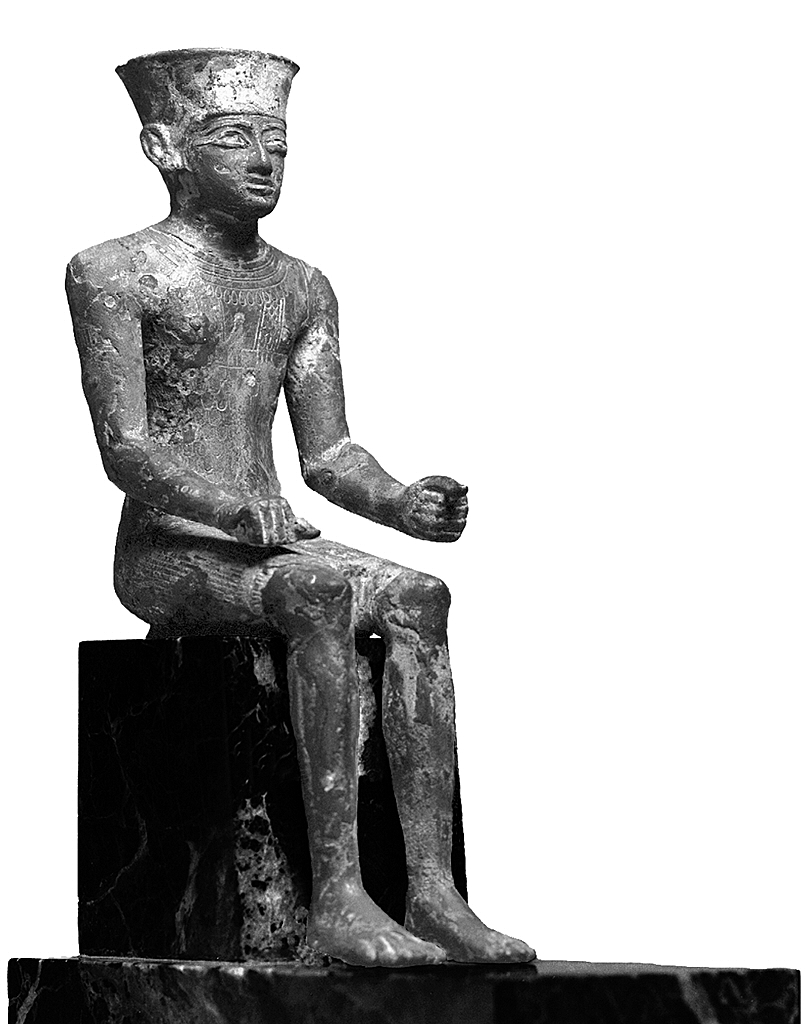Seated Amun
1550-1292 BCE (New Kingdom)
bronze, gilt, gold inlays
(Ancient Egypt and Nubia )
(Ancient Egypt and Nubia )
Provenance
Provenance (from the French provenir, 'to come from/forth') is the chronology of the ownership, custody, or location of a historical object. Learn more about provenance at the Walters.
Provenance (from the French provenir, 'to come from/forth') is the chronology of the ownership, custody, or location of a historical object. Learn more about provenance at the Walters.
Dikran Kelekian, New York and Paris [date and mode of acquisition unknown]; Henry Walters, Baltimore, 1912, by purchase; Walters Art Museum, 1931, by bequest.
Conservation
| Date | Description | Narrative |
|---|---|---|
| 9/17/1959 | Treatment | cleaned |
| 1/13/1976 | Examination | examined for condition |
| 11/7/1985 | Technical Report | other |
| 11/12/1985 | Treatment | cleaned; stabilized; repaired; coated; other |
Geographies
Egypt
(Place of Origin)
Egypt, Luxor (Place of Discovery)
Measurements
H: 6 15/16 in. (17.6 cm)
Credit Line
Acquired by Henry Walters, 1912
Location in Museum
Not on view
Accession Number
In libraries, galleries, museums, and archives, an accession number is a unique identifier assigned to each object in the collection.
In libraries, galleries, museums, and archives, an accession number is a unique identifier assigned to each object in the collection.
54.398


